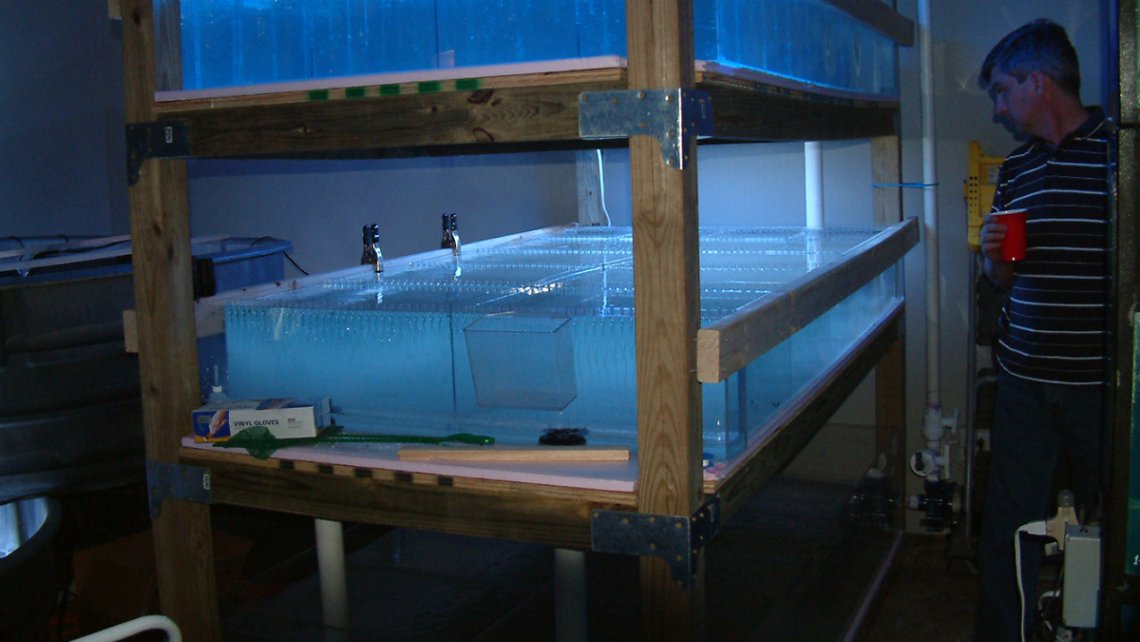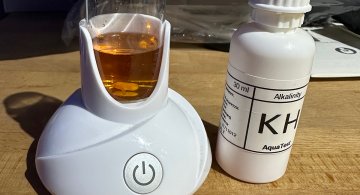Triple Tiered Unit - 650-gallons total
A local vendor contacted me about building a new system to hold livestock as it arrived. They drew up the plans, purchased the materials and started cutting up the pieces. When I arrived, my job was to show them how to assemble the parts successfully. The project came out great in the end, but a lot of things were learned along the way. The top two sections hold 200 gallons each, the bottom on holds 250 gallons.
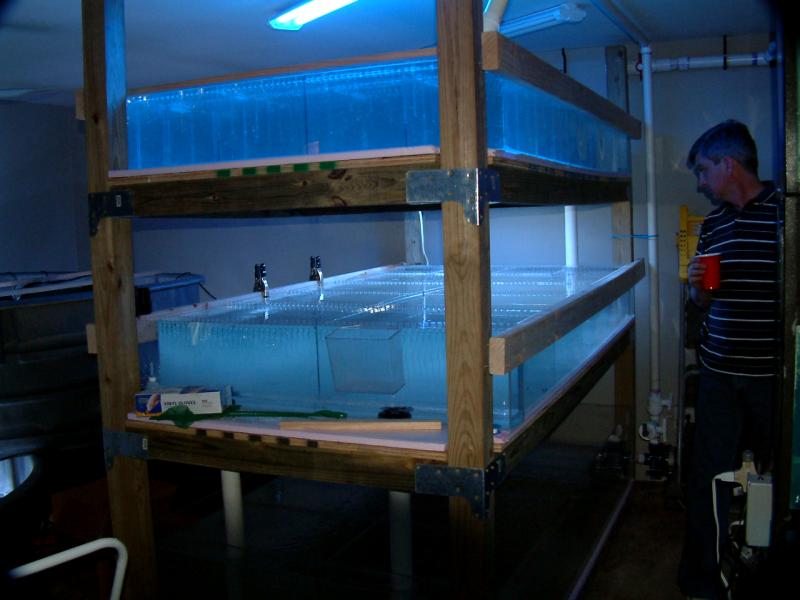
The bottom tier isn't viisble in the picture above because the lights had not been installed yet.
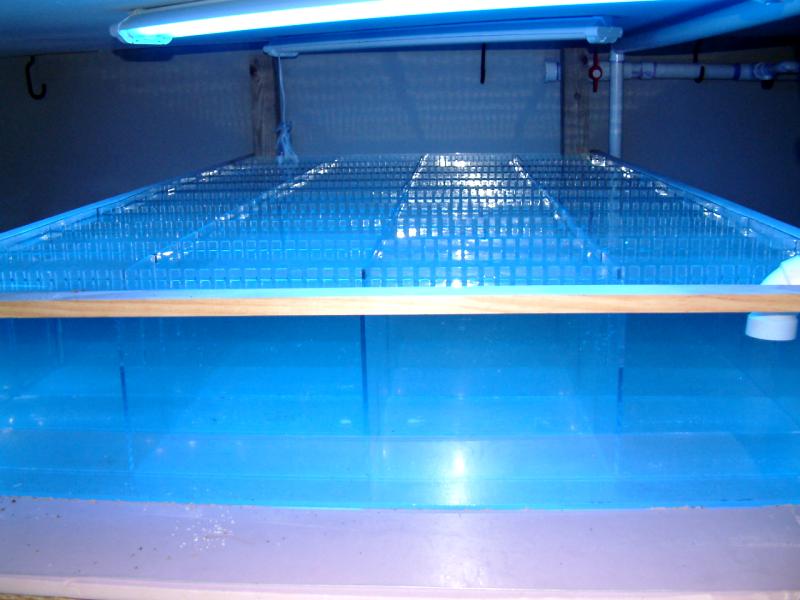
The top tier has a bunch of individual compartments. Most were glued into place, but more can be inserted to make each compartment half as wide, doubling the amount of livestock that can be isolated.
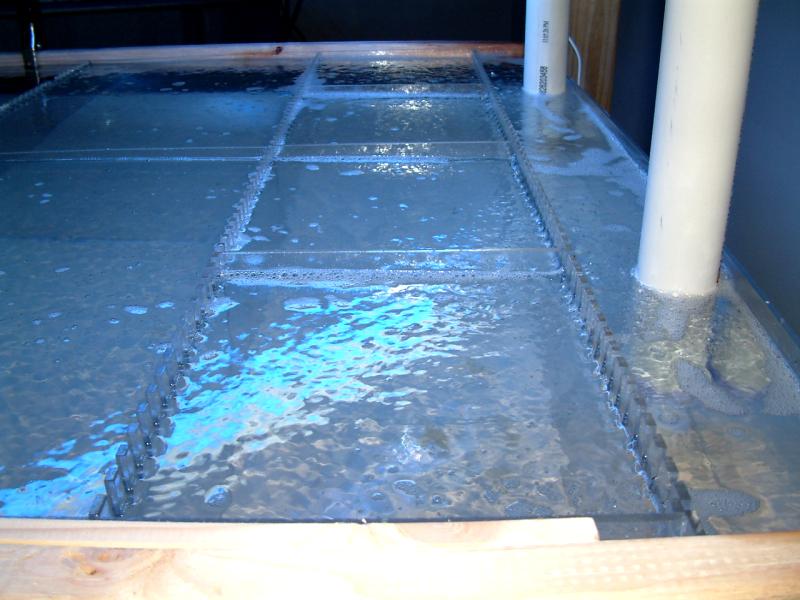
The second tier receives water from the one above it via PVC drain pipes. The water then flows to the left, seen above.
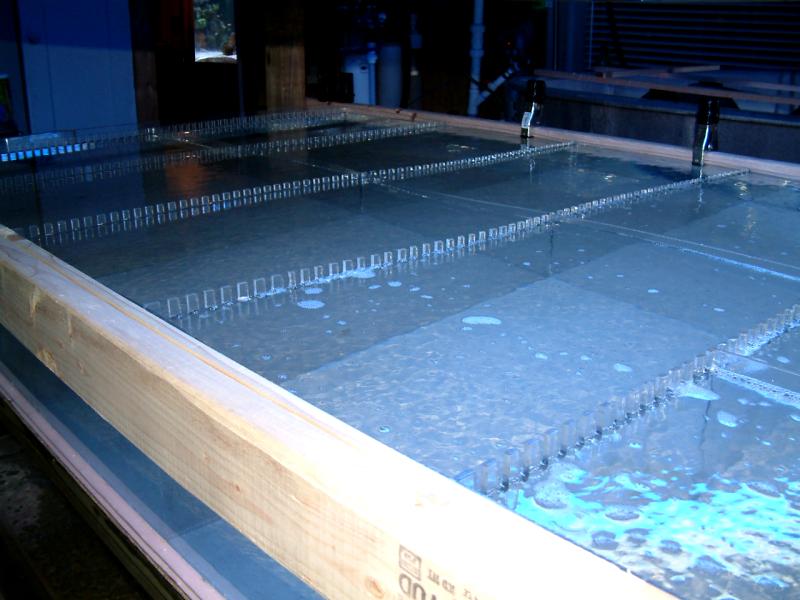
It continues to the far end, and then drains down to the third tier.

The second tier is glued with large compartments. Each one has room for 3 inter-connected pieces; making 6 separate spaces per box.
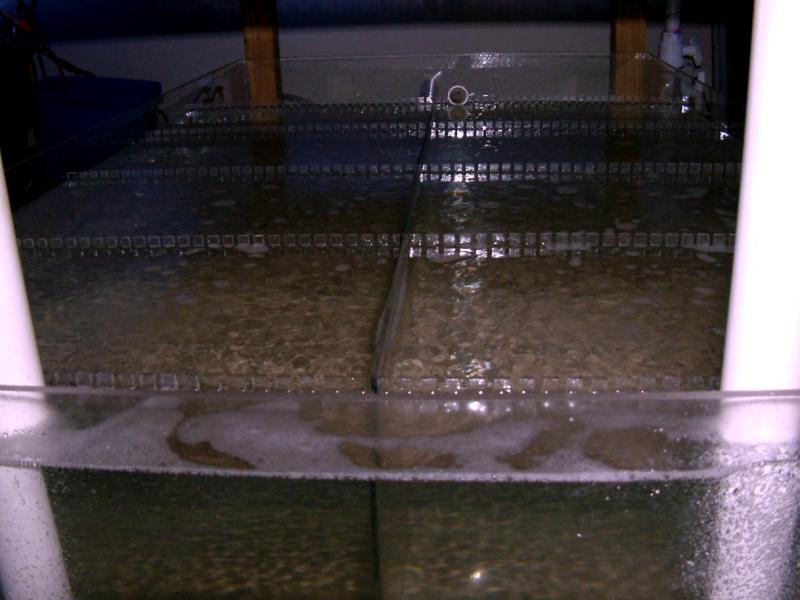
The bottom tier is the largest and can hold large fish.
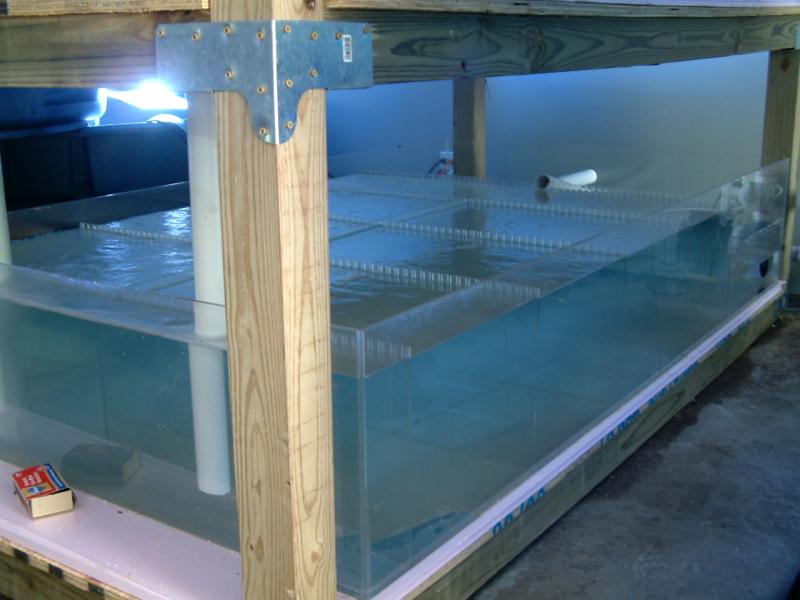
Dividers were made for this unit as well. The rear section is a sump compartment to hold all the surface water that drains when the pump is turned off.
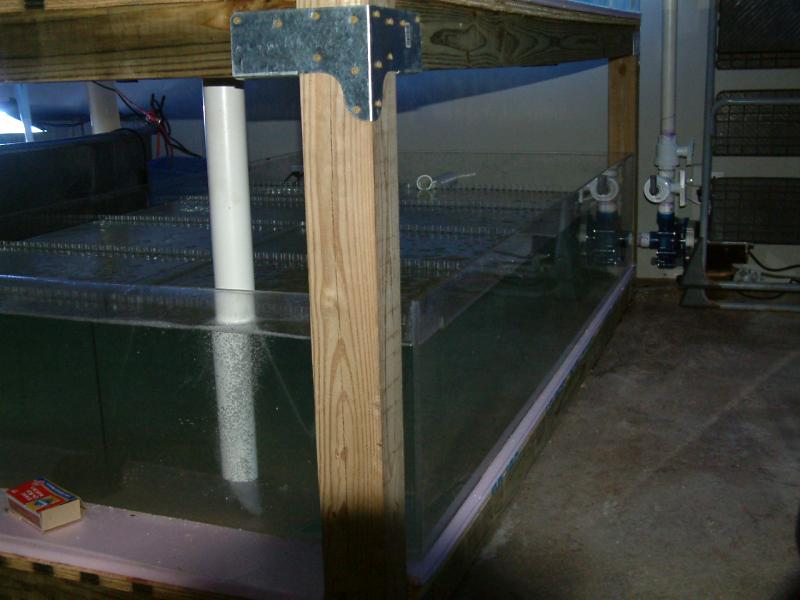
A Sequence pump moves all the water for this project, pushing the water to the top tier. Gravity flows across and down until it finally reaches the draining bulkhead and goes out to the pump again. Once the pump is started, within about 5 minutes, no air bubbles come out and into the top unit. A float switch maintains the water level in the final bottom compartment, which prevents any air being sucked into the pump. No microbubbles!
A few things were discovered during the construction phase, and other things were ascertained once it was completed. The individual platforms were not strong enough to support the weight of each tier, even with metal hanger brackets and 2x4 construction. 4x4 posts in each corner worked fine, but the center swayed or dipped about 1" under the weight of the water. This put serious pressure on each unit, wrinkling the outer walls. It was scary!!! The bottom tier was built with 3/8" acrylic and held its shape quite nicely, but the 1/4" used for the upper units wasn't rigid enough. In the future, all outer walls will be made with 3/8" even though all they had to hold was 10" of water. That strength is vital for success.
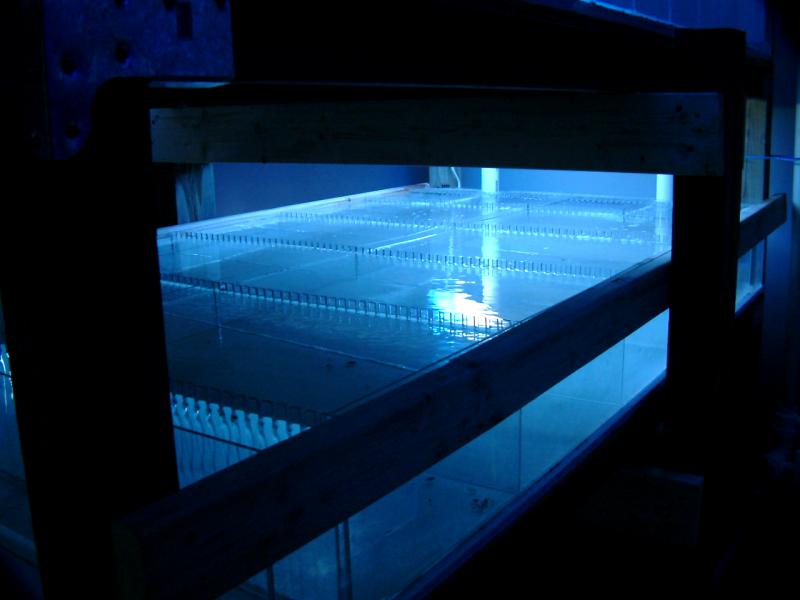
After picking up some lumber, we built cross bracing under each of the upper units. A 4x6 was used for the upright, and 2x6 boards were used on both sides of the upright to support the center of each platform. We used a jack to lift each side until it was perfectly straight, and then installed the cross beams.
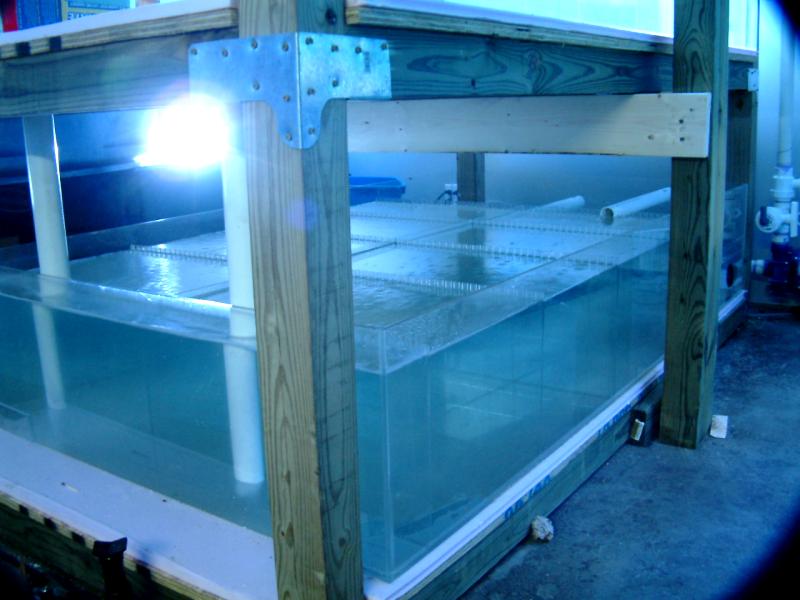
The additional support made all the difference and everything looked much more stable.
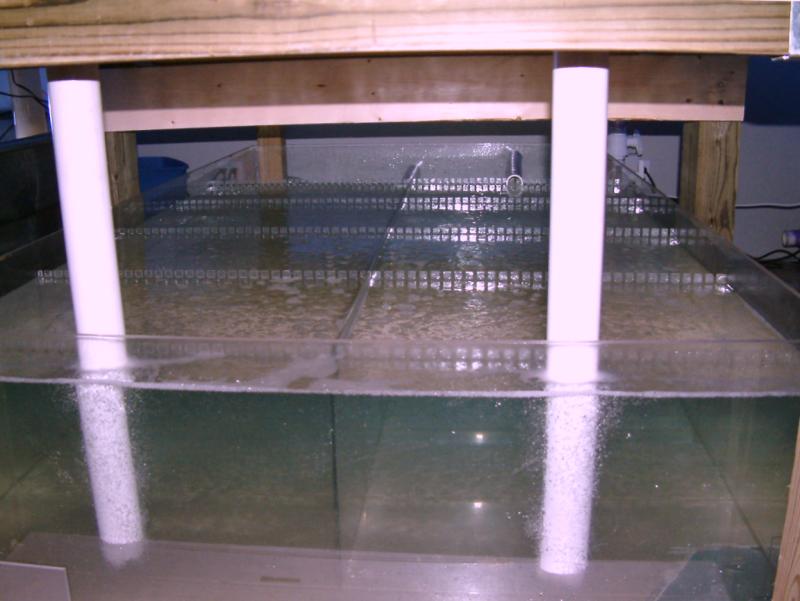
The cross beam is visible above. Note the fine bubbles that occur are not an issue at all.
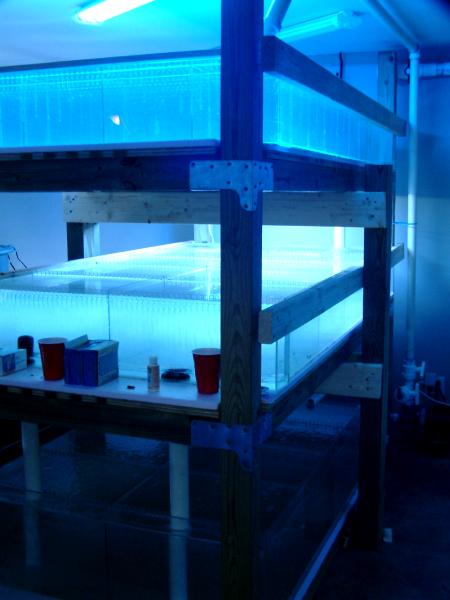
The unit is fully supported, tested and read for livestock.
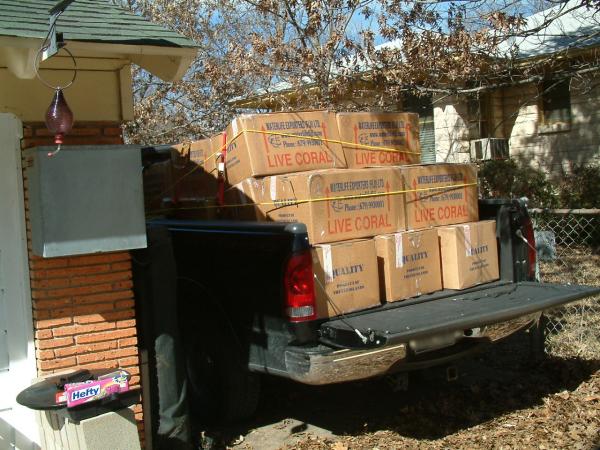
Just in time!
